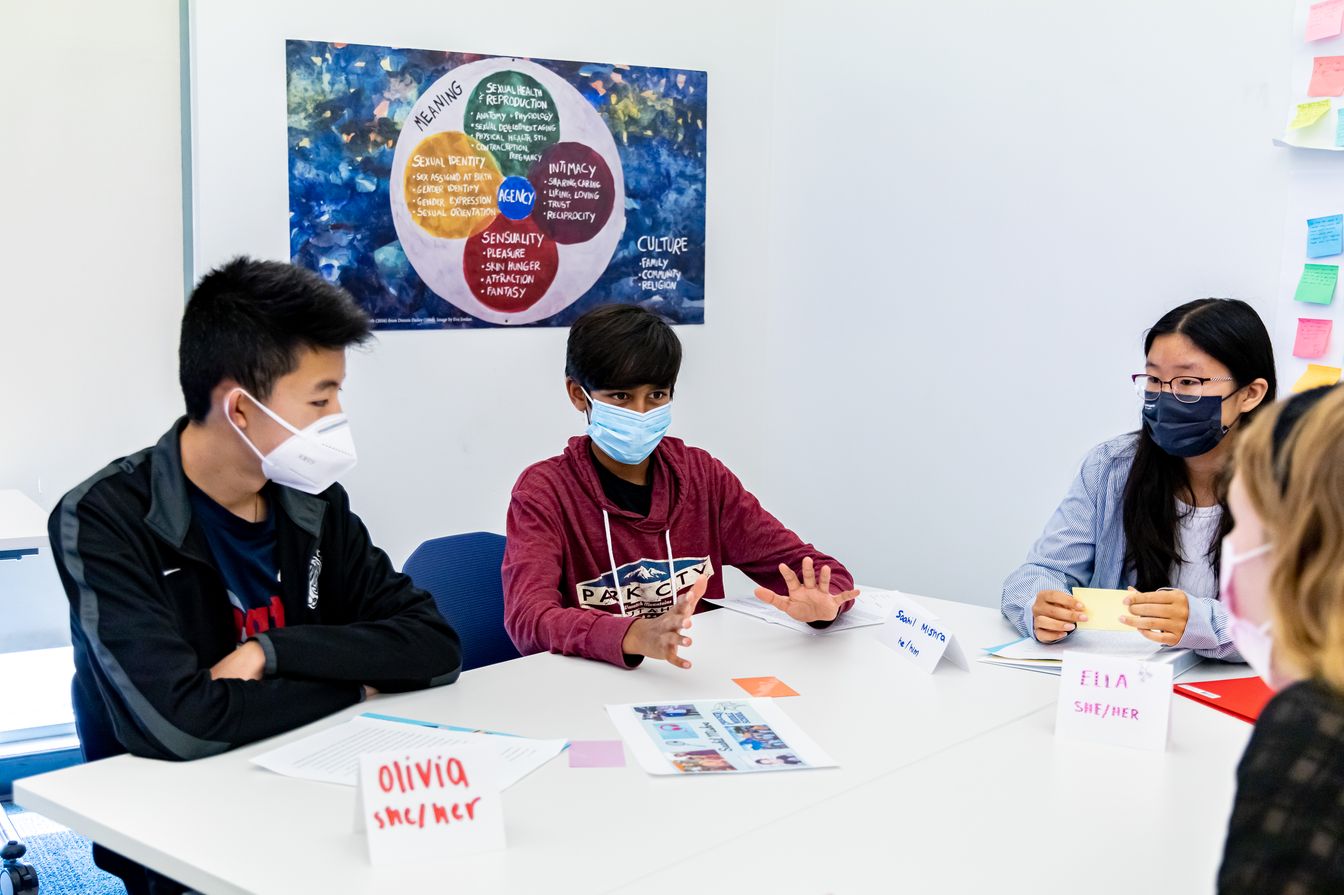It may be one of the most awkward classes at Lick-Wilmerding High School, but the Human Health and Sexuality class serves an important role in the lives of students—providing them with a comprehensive sexual education and consent foundation.
The class was first introduced to LWHS in 2018 as a mandatory semester-long course for sophomores. “We want students to be able to have a broad sense of what sexuality and what being a sexual being entails,” current Health teacher Diana Suarez Ben-Hur said.
The class was developed with the assistance of Shafia Zaloom, The Urban School health teacher, who guided Suarez Ben-Hur and Erin Merk in deciding what topics to include in order to build a comprehensive and inclusive curriculum. Since then, the curriculum has gone through multiple iterations, including when LWHS had distanced learning. During the pandemic, workshops led by two groups that help with the health curriculum for high schools in the San Francisco Unified School District (SFUSD) were halted. These workshops have yet to resume.
The Health curriculum has also been influenced by the SFUSD in another way: when the class in its current form was first introduced, the SFUSD curriculum was used as a model. Although the class has evolved, it has moved further away from the curriculum taught in public schools. A major difference is that the class now focuses on teaching around the circles of sexuality instead of just health and reproduction topics; some of these ideas are already covered in LWHS’s frosh year Biology classes.
The circles of sexuality are a method of learning about sexuality through the different lenses of sexual health and reproduction: intimacy, sensuality, sexual identity and agency. This method of teaching centers around the idea that all sexuality-related topics will fit into one of the circles.
As a private school, LWHS does not need to follow the mandates set by the California government or the SFUSD; however, the curriculum may have been indirectly influenced by them in its inception.
These human sexuality mandates that SFUSD schools have to adhere to are not as restricting as they may seem. “There’s just a plethora of ways to approach any topic, so you always make sure it’s aligning with the standards as just part of the practice,” said Amanda Hilger, a health teacher at Balboa High School.
The Balboa curriculum has an anti-racist element built into it. “It’s just so important to always have that lens when thinking about health and health equity. We explore concepts like intersectionality, power and privilege right from the beginning of the course. When we kick off the year, we do a lot of work around personal identity versus our social identity and how those sorts of things impact mental and emotional health. This includes just how we move through the world and it definitely cycles through all of the topics,” Hilger said. The LWHS curriculum does not have this element built in, although it is an initiative that students in the LWHS Anti-Sexual Assault and Harassment Working Group have been working to include.
The Working Group would like to see more discussion about core identifiers, especially race and its relationship to sexual assault. “[The teachers] definitely talked a good amount about how queerness affects [sexual assault], which is good, but different core identifiers and especially race have such a huge impact,” Working Group member Katie Flemming ’24 said. The group would also like to have more focus on rape culture and the systemic causes of sexual violence, not just consent in the moment of assault.
In their third year, the group is focusing largely on the sophomore Health class by restructuring the course to emphasize care for survivors of sexual assault and harassment.In order to do so, the Working Group is asking the teachers to give whole class breaks after or before an intense discussion. In this case, if anyone feels triggered, they can remain outside of the class while the topic is covered. The class’s current student mental health policy is simply to “take care of yourself” but many feel it is lacking in actually caring for students.
“We’ve found that a lot of people don’t [leave the class when triggered] because it’s very isolating when all of a sudden, something traumatic comes up that relates to your past and then you stand up and you’re the only person in the class and all eyes suddenly go to you. You have to make that walk across the classroom and outside and then everyone just knows that you’re feeling those emotions,” Flemming said. The group is also working towards having teachers send out content warnings before the start of class, so if a discussion or activity may bring up trauma, students will have the option to skip that class.
The group’s work seems to follow a similar goal that Suarez Ben-Hur laid out for the class. “It is my hope that students see this not as the only sexuality education that they will get in their lives, but as the beginning of a self exploration journey, right where they can really look back to their high school years,” she said.







